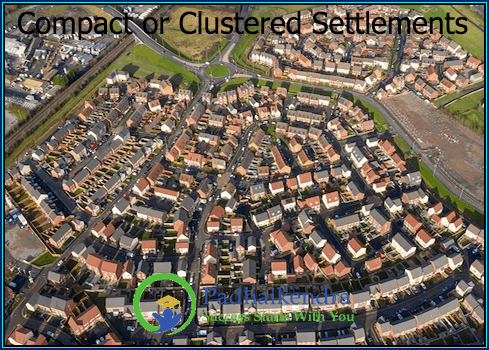Compact or clustered settlements refer to communities where buildings and structures are built close together, with a high density of population and activity. This type of settlement pattern can be found in both urban and rural areas and has several features:
- Buildings are clustered together, often arranged around a central public space such as a town square or village green.
- There is a high population density, with many people living in a small area.
- Compact settlements tend to have a mixed-use character, with a variety of land uses such as residential, commercial, and industrial.
- Public transportation and pedestrian networks are usually efficient and accessible.
- Compact settlements often have a strong sense of community, with social and cultural activities taking place in public spaces and shared facilities.
- Compact settlements can have a smaller ecological footprint compared to dispersed settlements as they can reduce travel time, energy consumption and carbon emissions.
- In rural areas, compact settlements can be characterized by a clustering of farmhouses and agricultural buildings around a central core, while in urban areas, compact settlements may be found in the form of dense neighborhoods or mixed-use developments.
- Compact settlements can have several benefits, including lower infrastructure costs, reduced pressure on natural resources, and greater social cohesion.
Overall, compact or clustered settlements are an important aspect of sustainable development and can help to promote a more sustainable, inclusive, and livable built environment.





